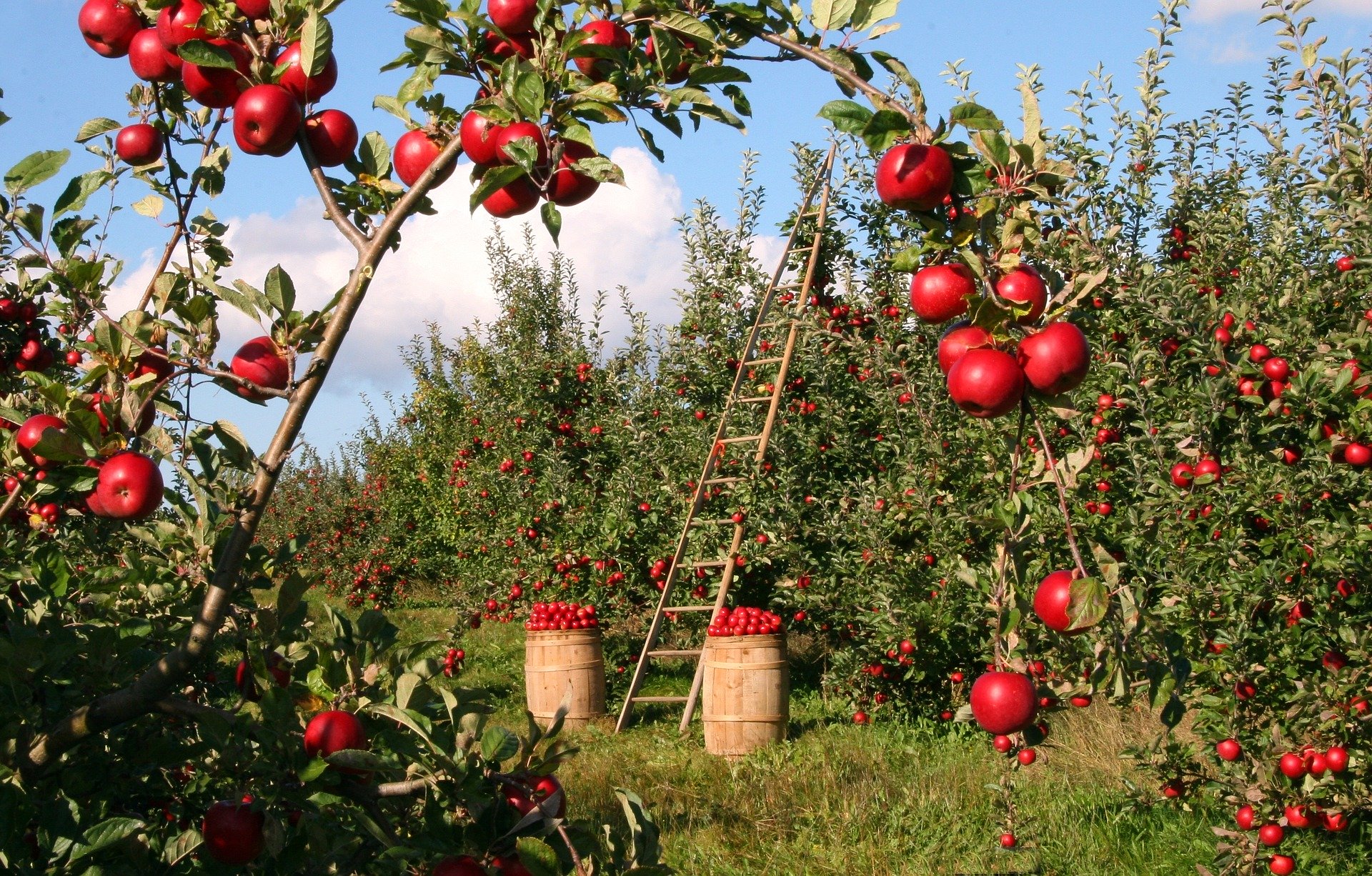A definition of food security proposed by World Food Summit in 1996 emphasized that a country would achieve food security when it’s all people, at all times, have physical and economic access to sufficient, safe and nutritious food that meets their dietary needs and food preferences for an active and healthy life.
There are now several concepts and definitions of food security proposed by different organizations such as the Food and Agricultural Organization, the World Bank, and so on, but the main themes remain the same. In this blog, I discuss if Nepal is on track to food security, highlighting current challenges and opportunities in the Nepalese agriculture and overall food systems.

Specifically, I identify causes of low crop yields and high yield gaps and ways to reduce those gaps, as key strategies for achieving food security.
Drivers of food insecurity
Food insecurity in Nepal is the result of several constraints to agri-food system, particularly those faced by the subsistence farmers. Some of the issues and constraints include:
- Soil nutrient mining (i.e., negative soil nutrient balance) and reduced soil fertility caused by land degradation, soil erosion, and lower use of nutrients (or fertilizers) than is actually required by plant,
- Scarcity of groundwater for irrigation due to lowering and mining of groundwater, and due to drying up of rivers and aquifers as a result of reduced rainfall or melting of snows in Himalayas and mountains,
- Artificial scarcity of surface water for irrigation due to farmers’ inaccessibility to rivers even though they are in sufficient numbers across the country,
- improper management of natural resources resulting in loss of biodiversity and indigenous plant species of economic values, and
- Loss of forests resulting in reductions in rainfall, soil fertility, fodder for animals, and fuel wood for rural households.
On top of these is the global climate change and variability which is causing uncertainties in ecosystems performance and overall risks in agriculture. All these factors are leading to food, nutrition and income insecurity at various levels, from individual to the national and will continue to impact in future too.
Looking at some hard data
Current production and demand data for major cereal crops (i.e., rice, wheat, maize, barley, etc.) indicate that there is chronic food deficit in the mountains and hills (nearly 0.1 million tons in each region) but some surplus in the Terai (0.1 million tons), resulting in about 0.1 million tons food deficit in the entire country.
However, due to policy defects, the surplus food from Terai is not distributed properly to food-deficit areas in hills and mountains. Current farmers’ average yields of the above cereals are much lower than their climatically potential or farmers’ attainable yields (yield gap 1, YG1) or between attainable and farmers’ yields (yield gap 2, YG2).
Potential, attainable and farmers’ average yields of rice are 10.0, 6.0 and 3.2 t/ha, with YG1 and YG2 of 6.9 and 2.9 t/ha, respectively, while corresponding yield gaps for wheat are 4.7 and 2.7 t/ha, respectively. In maize, if hybrids are used, potential and attainable yields can be very high, but since farmers’ average yields are only about 2.5 t/ha, both types of yield gaps are quite large, at 9.5 and 5.5 t/ha, respectively.
These data reveal that there is plenty of scope for increasing farmers’ yields and reducing yield gaps of all of these crops.
Major causes of low crop yields are: (i) practice of traditional or subsistence farming systems; (ii) predominant use of poor seed quality though high-yielding varieties (HYVs) (rice and wheat for more than 90% areas and almost 100% maize hybrids are used in Terai; (iii) use of low-yielding composites and synthetic maize varieties in hills and mountains; (iv) no or low seed replacement rate of HYVs and use of recycled maize hybrids; (v) low use of production inputs such as fertilizers, pesticides and herbicides; and (vi) rainfed cropping system predominantly. Similar situations of low yields or low productivity exist in other crops, vegetables and fruits, as well as in livestock, poultry and fish.
Is organic farming the solution?
Some sections of the society are advocating for the promotion of organic farming, without scientific and practical understanding of how this type of farming performs and what the consequences could be if the country as a whole adopts organic farming.
Organic farming is essentially good, but there are also some pertinent issues such as: (i) lower crop yields; (ii) lack of sufficient plant (organic) biomass with farmers which are necessary to maintain/increase soil fertility; (iii) lack of organic nutrients/fertilizers required to achieve high yields; (iv) low and variable nutrient contents in organic manures, e.g., farm yard manure (FYM), cowdung and composts, etc.; (v) difficulties in transportation, storage and application of organic manures which are required in large amounts due to their low nutrient contents; and (vi) lack of organic materials for controlling weeds, pests and diseases, etc.

There are also significant issues related to processing, storage, and marketing of organic products.
However, there are also some opportunities for making granules and pellets from organic manures by organic fertilizer machines, such as used in China, India, Philippines, etc. Organic products can also receive premium prices if they are certified and quality is controlled.
Nevertheless, given the poor knowledge and research gap in the country, it would be almost impossible to achieve food security, only through organic farming. Scientific and applied research on organic farming is warranted before their large-scale adoption and promotion.
Commercialising farming is a must
Nepal needs to rapidly transform its agricultural production systems from subsistence farming to commercial farming to achieve food security. For such transitions, however, there are several socio-economic and institutional bottlenecks faced by subsistence farmers.
Appropriate policy and research and extension supports are necessary for such transitions as moving to commercial agriculture requires some basic prerequisites and infrastructures.
Some of such pre-requisites are developing irrigation facilities especially for dry or winter season, establishment of facilities for soil testing, seed production/testing and for storage/processing (post-harvest related) of fruits and vegetables, transport and marketing of products (inputs/outputs) domestically and internationally, and development of basic infrastructures for rural agriculture roads and rural electrifications, etc.
Commercialization of agriculture will lead to modernization and industrialization in the agriculture sector. Once the above pre-requisites are met, commercialization can be catalysed through contract, cooperative, or lease farming, all of which would require farm mechanization.
In Nepal, especially in the hills and mountains, however, land fragmentation is a major bottleneck for commercialization.
Voluntary land consolidation by farmers or farmers’ groups or organizations would be required which could permit to use small-sized machines in the hilly terrains.
Other impending technological needs for achieving food security are: (i) biotechnology and genetic engineering for rapid release of pests and disease resistant and drought-, heat- and cold-tolerant varieties, as well as varieties that can withstand extreme soil stresses (i.e., low nutrient or extreme pH levels) under current and future climate; (ii) use of quality seeds of HYVs & hybrids with rapid seed replacement rate, (iii) increased fertilizer use; (iv) integrated and/or site-specific precision nutrient management (i.e., balanced use of inorganic and organic fertilizers); and (v) drip or precision irrigation and (vi) agroforestry systems by integrating crop, livestock and trees. On top of these, there is a need of improved research, extension, and policy support for transfer of these technologies aimed at mechanization and commercialization.
Success in mechanization, however, depends on the development of custom hiring centres and service providers for small farm machinery (e.g., tillage, harvesting, threshing, etc.), market-based supply and repair chains for agricultural machines, and training/loans/incentives for service providers and farmers to purchase or hire, or use or repair the machines. Mechanization also provides opportunities for practising conservation agriculture (e.g., use of reduced tillage, crop residue retention, and profitable and sustainable rotations). Mechanization and commercialization can also potentially provide employment opportunities for youths. As said earlier, though Nepal’s agriculture is predominantly characterized by subsistence farming systems, there are some sporadic cases of commercialization such as practise of direct-seeded or mechanical transplanting of rice, use of small-sized machines for planting, crop establishment, harvesting, threshing, etc., large-scale production of vegetables, fruits, dairy cattle and poultry, and community or farm forestry with integration of crops and/or livestock, etc. However, such commercialization is in infant stage and developing at a very slow rate.
Catching up with new technologies
Globally, there are now new developments in agriculture research, development and extension, aimed at improving efficiency of inputs (internal or external) or labour use in agriculture and improved precision in measurements and modelling, and data management. Some of such developments are: remote sensing and GIS, modelling and simulations, decision support systems (DSSs) and mobile applications, sensors and equipment, automations, robotics and drones, artificial intelligence, big data and Internet of Things (IoTs) and machine-to-machine communications, digital agriculture and smart farming, etc. Many of these developments are quite innovative and are appropriate for large-scale commercial farming, as has already been practised by farmers in developed countries, and also by those in some developing countries such as China and India, which are promoting such technologies to a smaller extent.
In the case of Nepal, such innovations can be useful in future and hence research and academic institutions need to start exploring and testing them. Our priority for now and into the immediate future however would be to increase the productivity of crops, livestock and other income-generating enterprises by practising improved technologies with high-yielding inputs that are quickly available and by mechanizing the farming that would help reduce or close the enterprise performance (e.g., yields of crops, vegetables, fruits or trees; milk and meat from livestock, etc.), reduce labour needs, and increase input-use efficiency in farming. Such practices and innovations would ultimately enhance income-generating opportunities for rural youths and could contribute to food security in the country.
Dr Timsina is Honorary Professor, University of Melbourne, Australia; Adjunct Professor, Agricultural and Forestry University, Nepal; Director, Agricultural Research and Development, IFSD Sydney, Australia; and Consultant, International Maize and Wheat Research Centre, Mexico.
—————————————————————————————
*This blog is based on the presentation during the “NRNA Knowledge Conference” organised by NRNA Oceania on 15th September 2018. Sydney, Australia. The views expressed in this blog are those of the authors and not of the any organisation the author is associated with.




